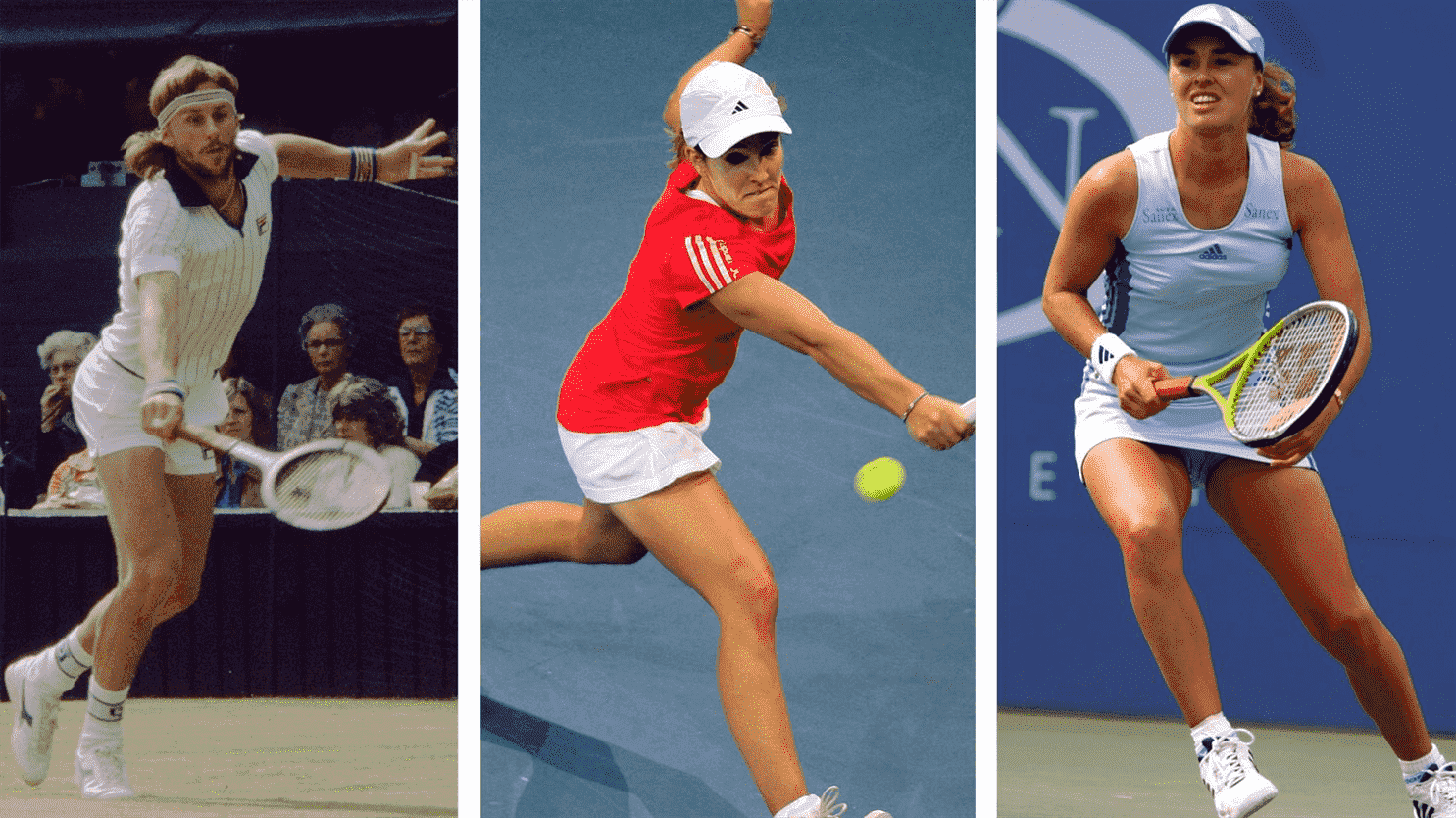Ashleigh Barty surprised everyone on Wednesday March 23 by announcing her retirement at just 25, two months after her victory at the Australian Open. The current world number 1 in women’s tennis notably mentioned “no longer having the physical energy, the emotional will and everything it takes to surpass oneself at the highest level“. An overview of these players who left the courts when they were among the best on the circuit.
Björn Borg, talent and early retirement
In 1983, then aged 27, “Iceborg” announced that he was officially retiring from sport. Two years earlier, the six-time Roland-Garros winner and five-time Wimbledon winner had already retired after the 1981 season, following two consecutive defeats in the Grand Slam final against his historic opponent, John McEnroe.
Two tennis greats, Bjorn Borg and John McEnroe, 1981. pic.twitter.com/Sd38IUI8Ge
— Groovy History (@GroovyHistory) September 5, 2021
Winner of his first Grand Slam tournament at only 18 years old, the Swede confided, to the Express in 2011, to have “discovered real life“once he retires.”Since I was 14, mine was to train, eat, play, sleep“, confessed the one who is considered by many to be one of the best players in the history of tennis. “Jcould have won more titles and stayed at the top of the rankings but… I didn’t want to anymore“, he said in Paris-Match, in 2015. Psychological and physical fatigue, linked to the practice of high-level sport comparable to that of Ashleigh Barty who mentioned no longer having “physical energy, emotional will and all it takes to push myself to the highest level“.
Justine Henin, first active world n°1 to retire
On May 14, 2008, during a press conference, the Belgian announced, to everyone’s surprise, that she was retiring, referring to “deliverance and relief“. At 25, the same age as Barty, she becomes the first player in the history of tennis to retire as an active world No. 1. A decision that is all the more surprising as it comes ten days before the start of Roland Garros, of which she had won the last three editions, and a few months before the Beijing Olympics.
Congrats to Justine Henin who has been inducted today into The International Tennis Hall of Fame. #IWD2016 #RGHeroes pic.twitter.com/xkR8eGeJwT
— Roland Garros (@rolandgarros) March 8, 2016
Justine Henin mentioned in 2017, in an interview with Ouest France, having made this decision because of a “true shortness of breath, both physically and mentally“. This premature departure of the Walloon, “tired of putting everything in brackets for tennis“, had made it possible to highlight the difficulties that high-level athletes can encounter, as well as their sacrifices to carry out their sports careers.
Away from the professional circuit for more than a year, the Belgian announces her return for the 2010 season. She manages to climb to the final of the Australian Open, where she loses to Serena Williams. Upset by recurring elbow injuries, she retired for good in January 2011.
Martina Hingis, prodigy with a winding career
Youngest winner of a Grand Slam tournament, on January 25, 1997 during her victory at the Australian Open at only 16 years and 3 months old, the Swiss became the youngest world No. 1 in the history of tennis. three months later. After her 5th Grand Slam title at the 1999 Australian Open, the young player continued to experience disappointment, notably with three consecutive defeats in the final of the Australian tournament (2000, 2001, 2002).
In 2003, then aged 22, the one who broke all records for precocity announces such an early retirement. In question, a bad pass which plunged her into total doubt, initiated by a defeat in the final of the Australian Open 2002 when she was leading 6-4, 4-0 against Jennifer Capriati, but also a succession ankle injuries and operations.
Watching all of the amazing talent at @AustralianOpen this year makes me smile and think about my first Grand Slam Title 23 years ago! #GrandSlam #nostalgia #AustralianOpen #firsttitle #1997 #AO #AusOpen pic.twitter.com/zTzOWFWnGt
— Martina Hingis (@mhingis) January 24, 2020
In 2006, Martina Hingis returned to the courts and achieved a rather promising “comeback” by winning the Rome tournament in May, before advancing to the quarter-finals at Roland-Garros. His 2007 season was then marked by a positive cocaine test in November at Wimbledon. denouncing “filthy and monstrous accusations“, the Swiss, claiming not to want to “fight against anti-doping authorities“, prefers to put an end to her career again. Between 2012 and 2017, she made a successful return to the doubles circuit, before retiring for good.
Kim Clijsters, retirement before a glorious return
World No. 1 for the first time at age 20 in 2003, crowned Grand Slam for the first time at age 22 at the 2005 US Open, Kim Clijsters announces his retirement on his website on May 6, 2007, a month before his 24th birthday. The Belgian is tired of battling physical problems, particularly on the wrist, which have already ruined 2004 for her.
The performances are still there since she is ranked 5th in the world the day she chooses to bow out, but she can’t take it anymore: “MInjuries prevented me from playing the tennis that I would like to play and that I was able to play before“. However, the one who did not see herself “not play much more than two or three years” in 2005, made her comeback in 2009, which she will not regret.
Invited to the US Open, Clijsters overcomes the Williams sisters and dismisses Caroline Wozniacki in the final and is crowned from her back-to-school tournament. And two other majors will follow (US Open 2010, Australian Open 2011). In an interview given to the English newspaper The Guardian in 2012, the champion evokes a “wonderful second career” and retires again after his only participation in the Olympic Games, in London. Before a new return to 37 years old, in 2020, less conclusive.
